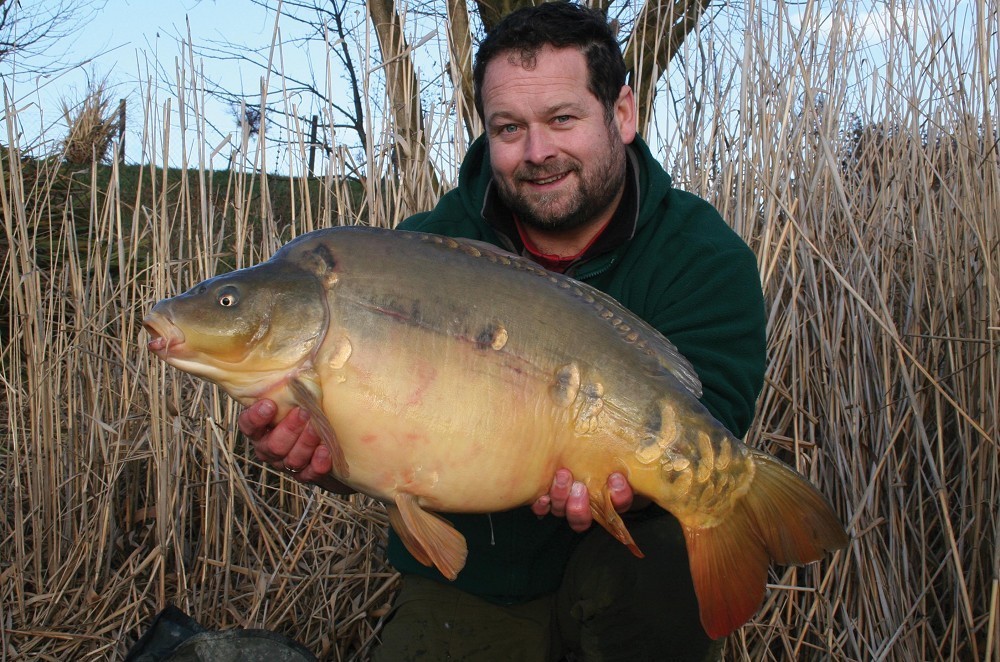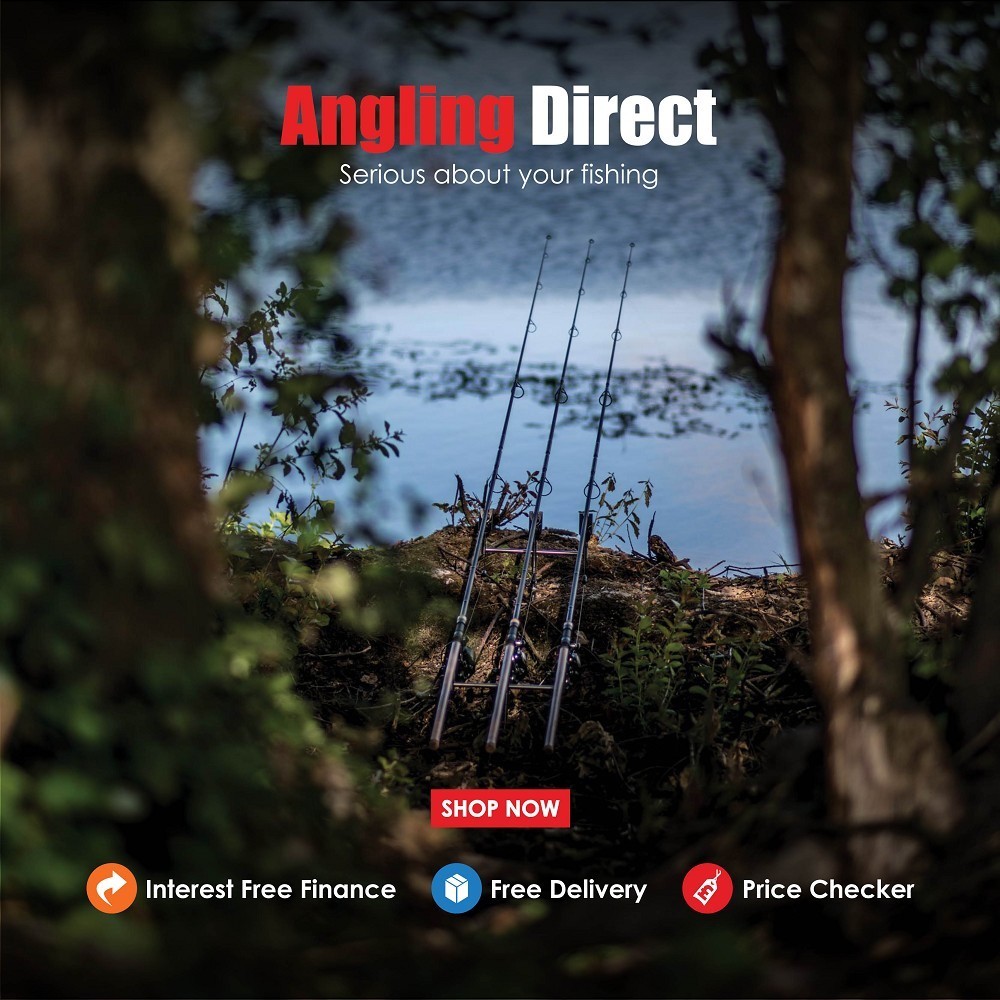
Shaun Harrison's Combi Rig Thoughts
Shaun's used the Combi Rig for over 15 years...
I have used my version of the combi rig for possibly getting on 15 years now and the only thing that has really changed in that time is my hook preference. Now, at first glance it is simply a no fuss combi rig utilising a nylon monofilament boom (I don’t like this to be an overly stiff material) and a soft braided tag end as we all know a standard combi link has. However, the measurements of the rig are incredibly important to get the most out of my version and one section not quite right renders the rig as just another rig rather than the highly effective grabbing engine that it is when tied to the right specification.
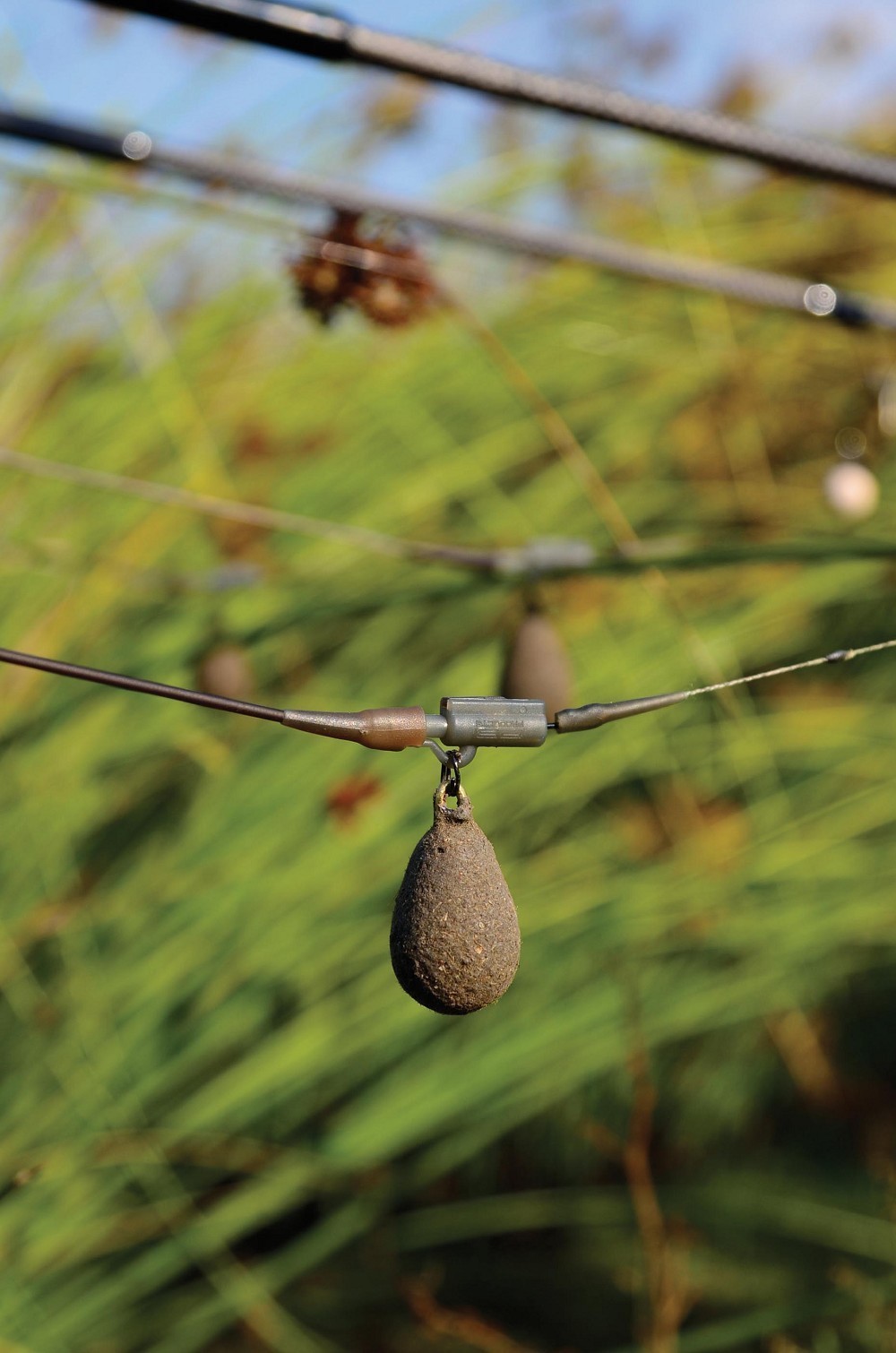 The lead arrangement Shaun opts for: lead clips, with the swivels removed from the lead, with anti-tangle sleeves to help push the rig away from the lead
The lead arrangement Shaun opts for: lead clips, with the swivels removed from the lead, with anti-tangle sleeves to help push the rig away from the leadOkay, let’s start at the hookbait end…
The rig came about from my minimalistic requirements, working upon the least amount entering the mouth the better and the less chance of the carp noticing anything is wrong for as long as possible. Those extra micro-seconds can make a huge difference.
Starting at the bait end, I use rod whipping thread for the Hair as it works better in my opinion than any other Hair material I have seen, soaking water in really well so becoming incredibly flexible when wet. It also allows me to colour code my rigs so I can see at a glance what is what on my rig board. Green Hair on my barbless rigs, brown on my barbed and black on anything I am experimenting with, be it a different hook or whatever. I use different shades of brown and green for different size hooks too. You must have been there, looking at your rig bin and everything looking the same – well, there is no need for that.
I still prefer to use a conventional loop pulled through the bait and use mini Hair stops, often pulled into a small groove in the bait as I’m paranoid about stops being noticed and felt, some really are very big and obvious. For years I used 22lb clear power gum when using pop-ups as it disappeared on top of the bait when underwater. So many other stops simply scream out at my paranoid mind. The old common denominator: the dangerous baits have two eyes on top, for that is what a large Hair stop looks like to me.
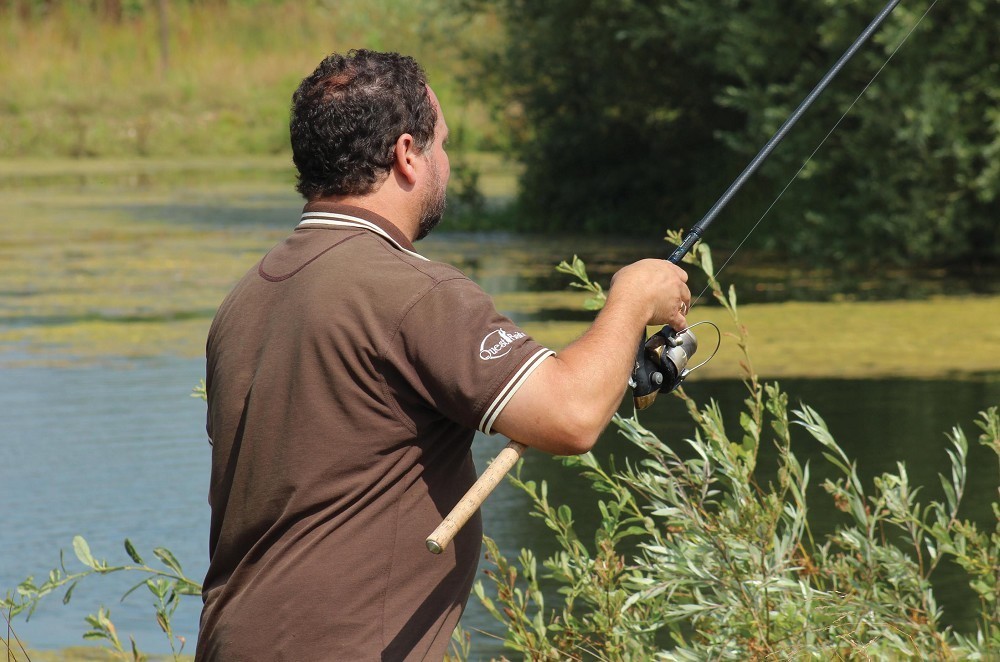 Along with a controlled cast, each ‘drop’ is perfectly felt down to the lakebed - two ways to help eliminate tangles
Along with a controlled cast, each ‘drop’ is perfectly felt down to the lakebed - two ways to help eliminate tangles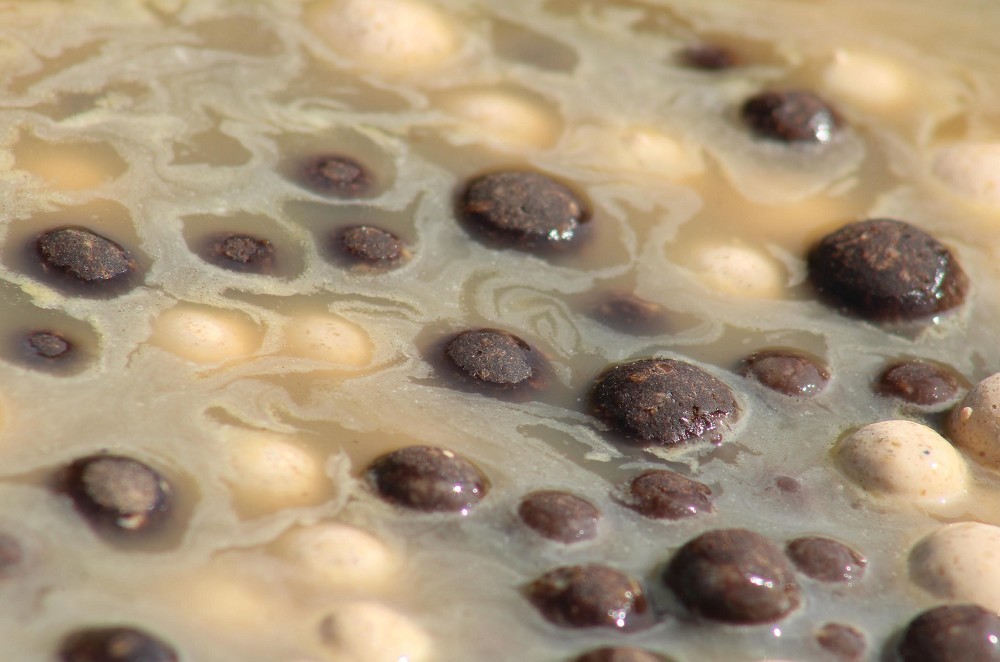 Rigs are just one part of the puzzle. Bait plays a big part, and Shaun’s juice-filled (hemp juice) boiled food is a big edge
Rigs are just one part of the puzzle. Bait plays a big part, and Shaun’s juice-filled (hemp juice) boiled food is a big edgeNow the Hair length is absolutely critical to get the most out of the rig.
For bottom baits, the gap between the hook and the bait needs to be the same diameter as the bait, so if you are using a 15mm bottom bait or wafter, then the Hair needs to be 30mm. If you are using a 20mm bait then a 40mm Hair. I simply tie another loop and loop-to-loop if I need a longer Hair. For pop-ups I’m happy with it shorter and in that case I prefer the bait to hang just 2-3mm below the bend of the hook when casting.
You may be wondering why I go to the bother of tying in a separate Hair rather than following through with the soft braided part of my hooklink and this is something I love to demonstrate during my tutorials as everyone so far, bar none, have been gobsmacked at the speed of the hook grabbing hold and the exaggerated and aggressive angle achieved with a fine soft Hair compared to a normal braided hooklink follow through Hair. It isn’t just a little different, it’s around 20% different.
 I’ve been using my version of the combi rig for 15 plus years now and the only thing that has really changed in that time is my hook preference
I’ve been using my version of the combi rig for 15 plus years now and the only thing that has really changed in that time is my hook preferenceThat’s the Hair section which I like to come out from under the Knotless Knot off the back of the shank, level with the point of the hook.
I have yet to find a skinned braid I feel offers advantages over my personal choice of nylon and braid. All appear to stand out quite obvious on the lakebed to me, none appear as discreet as what I tie, but most importantly the braided inner sections aren’t usually as soft as I require and most have a round profile which I definitely don’t like.
Let me explain that bit and I’ll give you a simple experiment you can do with your own collection of hooklink materials. Lay them out in front of you, shut your eyes and carefully ‘feel’ each one, pressing your fingers against them. You will probably be surprised how ‘hard’ most feel. Once you have gone through your hooklinks and decided which are the most difficult to detect, you will find it is the flat profile braided sections, not the round profile ones yet nearly all the coated braids have a round profile.
I have spent my life questioning everything and trying to come to my own conclusions on things, thinking outside the box as much as possible, rather than taking what I’ve been told as gospel. I took the hooklink scenario to another level years ago when I actually got a blind person to handle my hooklink materials and tell me the ones that were most discreet in feel to him as like with other disabilities, other senses become more acute and I felt a blind person’s sense of touch would be better than someone with normal eyesight.
So, the braided section has to be a soft flat profile or else I’m simply not confident in it knowing I can make my rigs better.
This leads us onto the stiff section of my combi rigs but before doing so I need to mention the knot join. I use a Albright Knot and this is a part where the rig can be seriously messed up, for if you don’t get the dimensions right, you have messed up the rest of the rig.
After tying the knot, the bit of braid you are left with needs to be the same length as the shank of the hook. Again, on my tutorials I carry rigs with a longer braided section then show how it stops the rig working to its maximum effect, stopping accelerated hook grab in the mouth if the other measurements are correct.
Moving onto the stiff section and I don’t like this to be too stiff. I have used so many different types of nylon and fluorocarbon for a while, trying to find what I felt was the best material for this and have ended up back with what I first started tying the rig with many moons ago. I do make a bit of a tweak here before I tie my rigs, my 25lb nylon I prefer is first stripped from its spool and coiled into a saucepan of water. I then bring this to the boil and then leave to cool.
Why bother? Well it makes it softer still, takes any shine away and makes it sink much quicker. Call me anal, but I will take every last edge I can.
Length of the stiff section is the only part of my rig that I vary depending upon the size of the fish I am fishing for and also how I think they are feeding which will be tied in with how I’m baiting.
A Figure-Of-Eight-Loop is tied into the end of the hooklink and then attached to my main line with a small quick-change hook covered with a cut down anti-tangle sleeve. The loop helps act as a bit of a tapered boom which eliminates tangles when used with a trimmed down anti-tangle sleeve. I trim these as some sit rather strange on the bottom with air bubbles trapped inside when used at the conventional length.
Small baits (it is rare that I use larger than a 10mm hookbait) are generally thrown over quite nicely after the lead bumps the bottom on a tight line and with balanced pop-ups and wafters, I find it a delight watching the rig set itself.
Well, nothing new with my rig, I have written about it for years but it is very easy to tie it wrong.
Tied wrong it will still catch a lot of fish but not as many as if you take the care and understand the logistics to get it bang-on.
All a rig needs to do for me is be as discreet as it can possibly be on the lakebed, have little in the way of clutter to hinder natural bait movement much and finally grab the fish as quickly as is possible once in the mouth. We only get a split second for this to happen and all of us get rigs ejected far more times than we could ever imagine.
I could go on as the lead and everything else have a role in this but the other side of the hooklink swivel is another subject in its own right. Just as it is real easy to get the hooklink mechanics wrong, it’s just as easy to get the terminal set-up wrong, especially so in winter months.





